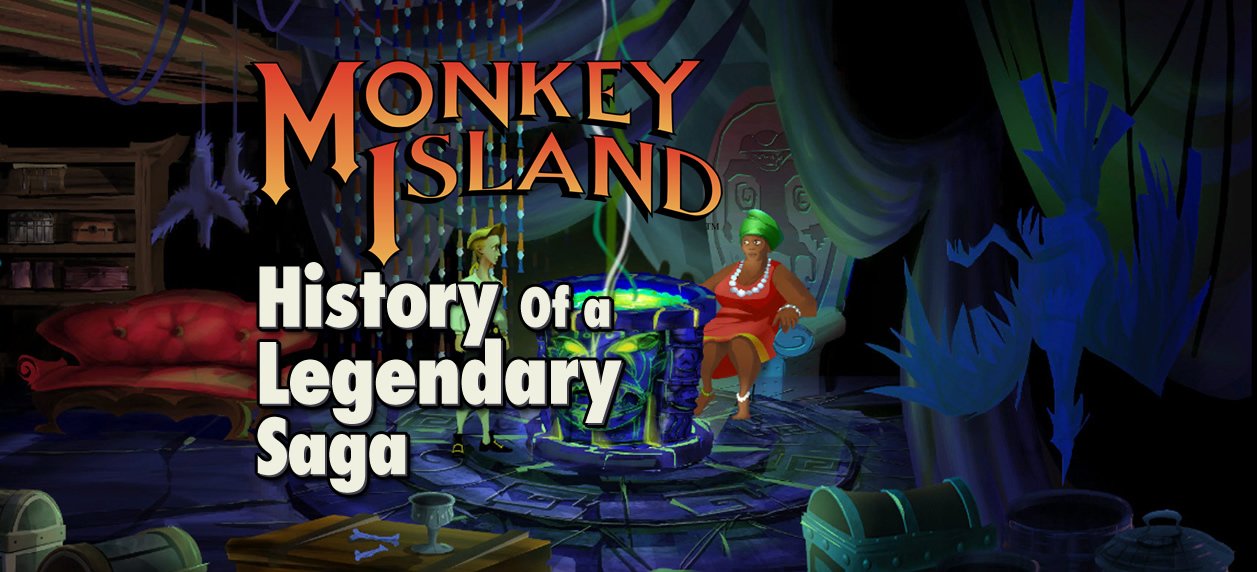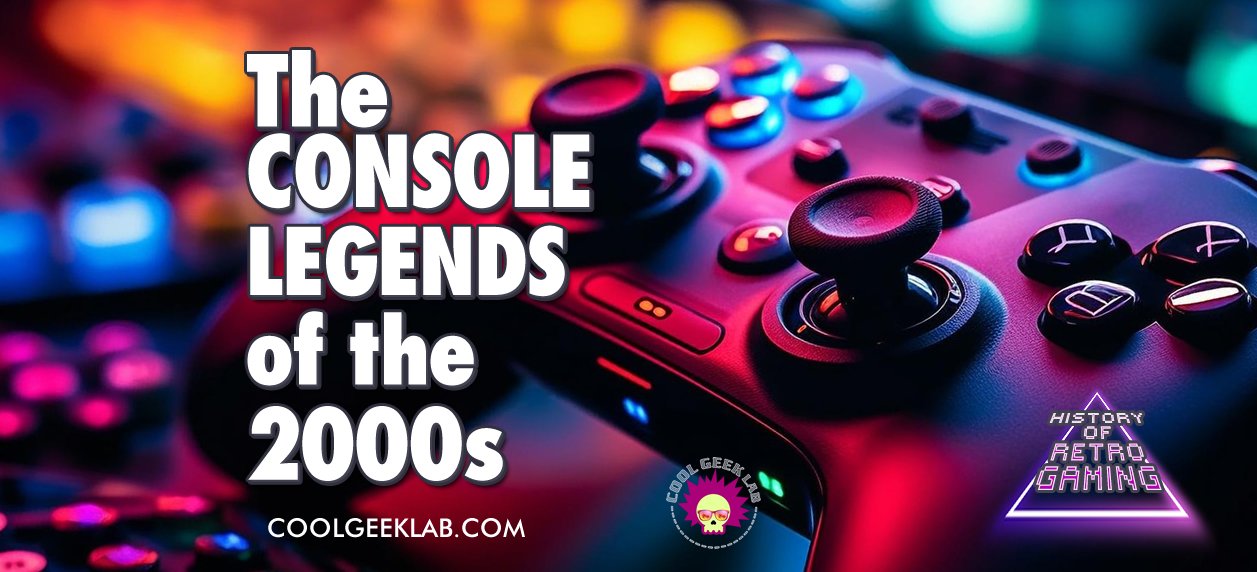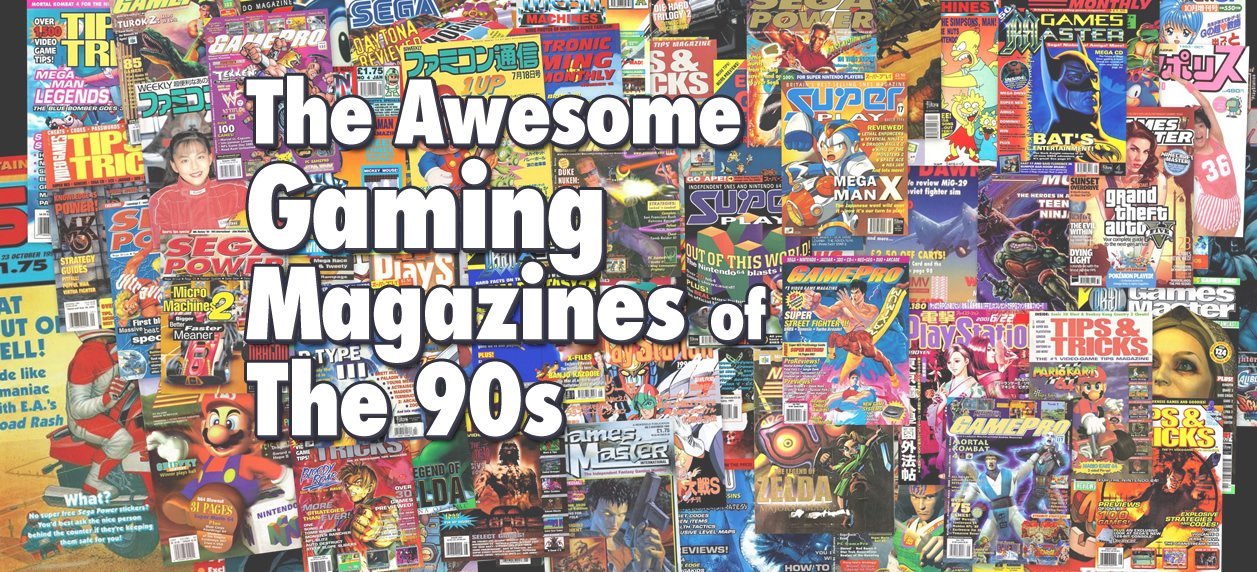Ahoy there, fellow retro gaming enthusiasts! Today, we're setting sail on a swashbuckling adventure through the digital seas to explore the legendary “Monkey Island” franchise, a treasure trove of humor, wit, and nostalgia.
Table of Contents
Grab your trusty parrot and a barrel of grog as we dive into the world of LucasArts' iconic series!
Monkey Island: The Birth of a Legend
Let's set the chronometer back to the late 1980s. LucasArts, the studio renowned for its innovative point-and-click adventure games, unleashed a gem upon the gaming world: “The Secret of Monkey Island.” This game, created by the brilliant minds of Ron Gilbert, Tim Schafer, and Dave Grossman, introduced us to the charmingly inept wannabe pirate, Guybrush Threepwood.

Released in 1990, “The Secret of Monkey Island” broke new ground with its graphical adventure style and hilarious, self-aware humor. The game was an instant hit, paving the way for numerous sequels and a dedicated fanbase that still thrives today.
The Origins of Monkey Island
The journey to the creation of “The Secret of Monkey Island” began with the formation of Lucasfilm Games (later known as LucasArts) in the early 1980s. The studio was founded by George Lucas himself, the visionary behind iconic franchises like Star Wars and Indiana Jones. Unlike other game developers of the time, Lucasfilm Games aimed to create interactive experiences with engaging narratives and innovative gameplay.

Ron Gilbert, a young and talented game designer, joined the team at Lucasfilm Games. His passion for storytelling and adventure games led him to conceptualize a pirate-themed game that would challenge the conventions of the genre. Gilbert's vision was clear: he wanted to create a game where players could enjoy the thrill of a pirate adventure without resorting to the typical swashbuckling hero trope.
The Birth of Guybrush Threepwood
From this vision emerged the character of Guybrush Threepwood, a bumbling, well-intentioned, and often comically inept young man with dreams of becoming a pirate. His name alone was a tongue-in-cheek nod to the absurdity of the gaming world, and it perfectly encapsulated the humor that would become a hallmark of the series.

Gilbert and his team worked tirelessly to develop a game that would defy the conventions of the adventure genre. They wanted players to explore a world filled with witty dialogue, memorable characters, and puzzles that required not just logic but creative thinking.
The Humorous and Self-Aware World
“The Secret of Monkey Island” was released in 1990 to critical acclaim and player adoration. It introduced players to the fictional Melee Island, a vibrant Caribbean setting brimming with quirky inhabitants. The game's humor was witty and self-aware, often breaking the fourth wall to make players smile.

One of the most iconic features was the insult swordfighting mechanic, where players had to engage in clever and humorous verbal sparring matches with foes. This element not only added a unique twist to combat but also became one of the most memorable aspects of the game.
The Impact and Legacy
“The Secret of Monkey Island” laid the foundation for what would become a legendary gaming franchise. It garnered a dedicated fanbase and set the standard for humor and storytelling in adventure games. Its success paved the way for several sequels and spin-offs, each building upon the quirky world and beloved characters that Gilbert and his team had created.
Ron Gilbert's innovative approach to storytelling and gameplay left an indelible mark on the gaming industry. His dedication to making players laugh and think in equal measure shaped Monkey Island's identity and contributed to its lasting legacy.
In the realm of retro gaming, “The Secret of Monkey Island” stands as a testament to the power of creativity, humor, and innovative game design. It continues to be celebrated by fans and remains a cherished treasure in the world of video games. The birth of this legendary series was a pivotal moment in gaming history, and it has continued to inspire and entertain players for generations
The Creators Behind the Madness
Our adventure wouldn't be complete without a closer look at the creative minds behind the Monkey Island series.
Ron Gilbert: The Visionary Game Designer

This genius game designer played a pivotal role in shaping the Monkey Island universe. His quirky sense of humor and knack for crafting engaging narratives helped establish the franchise's distinctive tone.
Ron Gilbert, often hailed as the mastermind behind Monkey Island, is a true legend in the gaming industry. His journey to creating this iconic series is as adventurous as the games themselves.
In the late '80s, Gilbert joined Lucasfilm Games, which later became LucasArts. His first significant contribution was “Maniac Mansion,” a game that showcased his innovative approach to storytelling and puzzle-solving. But it was Monkey Island that would etch his name in gaming history.
Gilbert's inspiration for Monkey Island came from his desire to create a pirate-themed adventure game that defied clichés. He envisioned a world where the protagonist, Guybrush Threepwood, was an unlikely hero – a wannabe pirate with a name that sounded more like a punchline. This approach was revolutionary at the time, as it turned the traditional pirate narrative on its head.
One of Ron Gilbert's most brilliant innovations in Monkey Island was the insult swordfighting mechanic. He drew inspiration from his childhood, where he and his brothers would engage in playful, humorous insults. This clever twist on combat became a hallmark of the series and endeared fans to its witty banter.
Ron Gilbert's dedication to storytelling and humor is what made Monkey Island so unique. His creative vision shaped the world of swashbuckling pirates, grog-swilling pirates, and ghostly villains that fans have come to adore.
Tim Schafer: The Quirky Innovator

Tim Schafer's journey to LucasArts began with a letter of admiration and a keen passion for game development. He wrote to the studio expressing his love for their work and, to his amazement, received a response that led to his career in gaming.
Schafer's contributions to the Monkey Island series were instrumental in shaping its quirky humor and unique characters. His offbeat style and comedic sensibilities blended seamlessly with Ron Gilbert's vision. Together, they created a world filled with absurdity, witty dialogue, and memorable moments.
In addition to his work on “The Secret of Monkey Island,” Tim Schafer played a significant role in the creation of “Monkey Island 2: LeChuck's Revenge.” His ability to infuse humor into every aspect of the games, from character interactions to puzzle solutions, endeared players to the series.
After leaving LucasArts, Tim Schafer founded Double Fine Productions, where he continued to produce beloved games such as “Psychonauts” and “Brütal Legend.” Schafer's legacy extends beyond Monkey Island, as he remains an influential figure in the gaming industry, known for his dedication to storytelling and humor.
Dave Grossman: The Puzzle Maestro

Dave Grossman's journey in the gaming industry began at LucasArts in the late '80s, coinciding with the early stages of the Monkey Island series. His initial work included contributions to games like “Indiana Jones and the Last Crusade” and “Loom,” which allowed him to hone his skills as a writer and designer.
However, it was with “Monkey Island 2: LeChuck's Revenge” that Grossman's talents truly shone. He was responsible for writing and designing the game, creating intricate dialogues, and crafting challenging yet entertaining puzzles.
Grossman's most enduring contribution to the series was the development of the iconic insult swordfighting mechanic. This unique form of combat, filled with humorous and witty exchanges, became a beloved feature of Monkey Island and demonstrated Grossman's knack for blending humor with gameplay.
Beyond his work on Monkey Island, Dave Grossman continued to collaborate on various adventure game projects, leaving his mark on the genre. His legacy is one of a masterful storyteller and puzzle designer, adding depth and humor to the Monkey Island series and many other games he contributed to.
Together, Ron Gilbert, Tim Schafer, and Dave Grossman formed a dynamic trio of creative minds that breathed life into the Monkey Island series. Their individual talents and collaborative efforts produced a gaming experience that continues to captivate players with its humor, memorable characters, and engaging storytelling.

In the world of gaming, Monkey Island remains a shining example of how the perfect blend of creativity, humor, and innovation can create an enduring legacy. As we embark on our own adventures in the digital seas of gaming, we owe a tip of our pirate hats to these three visionary creators for gifting us with the timeless treasure that is Monkey Island.
The Monkey Island Legacy
In this chapter, we will explore the enduring legacy of Monkey Island, tracing its evolution from the classic “The Secret of Monkey Island” to the episodic adventures of “Tales of Monkey Island.” Along the way, we'll uncover the story line of each game, release dates and delve into fascinating fun facts that breathe life into the series' rich history.
The Secret of Monkey Island (1990)

- Story: In “The Secret of Monkey Island,” players assume the role of Guybrush Threepwood, a bumbling and enthusiastic young man with dreams of becoming a pirate. He arrives on the fictional Melee Island and sets out to complete the “Three Trials” required to become a pirate. Along the way, he meets the beautiful Governor Elaine Marley and finds himself embroiled in a plot involving the ghostly pirate LeChuck, who is determined to marry Elaine and take over the Caribbean. Guybrush must navigate a series of humorous puzzles and challenges to thwart LeChuck's plans and rescue Elaine.
- Release: “The Secret of Monkey Island” set sail in 1990, introducing players to the charming world of Guybrush Threepwood.
- Music: Michael Land, the brilliant composer responsible for Monkey Island's unforgettable tunes, was a key figure at LucasArts during the '90s. His musical talent and innovative approach to game scoring elevated the Monkey Island series to new heights..
In “The Secret of Monkey Island,” players were introduced to the Caribbean-inspired musical world of pirates and swashbuckling adventures. The game's soundtrack featured lively, upbeat tunes that perfectly complemented the humorous and whimsical atmosphere. The opening theme, with its catchy melody and tropical rhythms, set the stage for an unforgettable adventure. Whether it was the peaceful melodies of Melee Island or the eerie tunes of the ghostly ship, Michael Land's music was a masterclass in creating mood and atmosphere. - Fun Facts:
- Guybrush Threepwood was originally named “Guybrush Stick” during development, but the name was changed to the more memorable “Guybrush Threepwood.”
- The game's protagonist, Guybrush Threepwood, was initially conceived as a straight-laced hero. However, Ron Gilbert's decision to make him an inept wannabe pirate added a unique twist to the character.
- The insult swordfighting mechanic, where you exchange humorous insults with foes, was inspired by Ron Gilbert's childhood experiences of playfully insulting his brothers.
Monkey Island 2: LeChuck's Revenge (1991)

- Story: In the sequel, “Monkey Island 2: LeChuck's Revenge,” Guybrush Threepwood returns to the Caribbean to search for the mythical treasure of Big Whoop. His journey takes him to various exotic locations, where he encounters old and new characters, including the enigmatic Voodoo Lady and the ghostly LeChuck, who has returned from the dead to seek revenge. As Guybrush delves deeper into the mystery of Big Whoop, he unravels a complex and hilarious tale filled with twists and turns.
- Release: The sequel, “Monkey Island 2: LeChuck's Revenge,” followed in 1991, continuing Guybrush's adventures in the pirate-infested Caribbean.
- Music: The sequel, “Monkey Island 2: LeChuck's Revenge,” continued Land's musical mastery. This time, he expanded upon the themes introduced in the first game, weaving a symphony of memorable melodies. The recurring motif of the “LeChuck Theme” was both ominous and captivating, befitting the game's darker and more complex narrative. Land's ability to convey a wide range of emotions through his music was on full display, from the whimsical “Woodtick” theme to the haunting “Big Whoop” melody.
- Fun Facts:
- The game cleverly references another LucasArts adventure game, “Indiana Jones and the Last Crusade,” with a grumpy ticket taker who resembles the one from Indiana Jones.
- Players can find a humorous reference to Star Wars in Monkey Island 2, where a skeleton holds a golden idol reminiscent of Indiana Jones.
- The game featured an amusing ending with a meta twist, suggesting that the entire adventure was being played out by two kids using action figures. This sparked fan discussions and theories about the game's true nature.
The Curse of Monkey Island (1997)

- Story: “The Curse of Monkey Island” sees Guybrush Threepwood caught in another perilous adventure. After accidentally proposing to Elaine Marley with a cursed diamond ring, she is turned into solid gold by the evil pirate demon, LeChuck. Guybrush must now embark on a quest to find a way to lift the curse and rescue Elaine. Along the way, he encounters a colorful cast of characters, including a French pirate named Captain Rene Rottingham and a love-struck bartender named Kate Capsize. The game's story is filled with humor, clever puzzles, and witty dialogue.
- Release: “The Curse of Monkey Island” arrived in 1997, offering a graphical facelift and a return to the world of pirates.
- Music: After a brief hiatus, Monkey Island returned with “The Curse of Monkey Island” in 1997, accompanied by a rejuvenated soundtrack. Michael Land once again transported players to the world of pirates and the Caribbean, infusing the game with lively, humorous, and memorable music. The accordion-driven tunes, jazzy rhythms, and playful melodies added depth to the characters and the game's witty dialogue.
- Fun Facts:
- Dominic Armato, who would become the iconic voice of Guybrush Threepwood, made his debut in this game. His charismatic voice added a new dimension to the character.
- The Curse of Monkey Island is full of hidden jokes and references, including amusing tombstones and clever item descriptions that reward curious players.
- The game was released on CD-ROM, featuring voice acting for the first time in the series.
Escape from Monkey Island (2000)

- Story: In “Escape from Monkey Island,” Guybrush Threepwood returns to Melee Island with Elaine Marley, only to discover that his beloved island has been taken over by the scheming Ozzie Mandrill, who is transforming the Caribbean into a tourist attraction. Guybrush must navigate through the challenges of the modern age, including navigating a bureaucratic nightmare and facing off against a new villain, LeChuck's brother, Ozzie. The game's story revolves around Guybrush's efforts to save his island home and thwart Ozzie's plans.
- Music: “Escape from Monkey Island” marked a transition to 3D graphics and a departure from the traditional 2D art style of its predecessors. Michael Land adapted to this change by infusing the soundtrack with a mix of traditional Caribbean sounds and modern musical elements. The result was a fusion of old and new, capturing the essence of Monkey Island while embracing the evolving gaming landscape.
- Release: In 2000, “Escape from Monkey Island” marked the series' transition to 3D graphics, introducing players to a more modern Monkey Island.
- Fun Facts:
- The game featured a humorous sequence where Guybrush Threepwood had to navigate a labyrinthine bureaucracy, poking fun at the red tape often associated with government institutions.
- In the game, Guybrush acquires a monkey named “Jojo Jr.,” a reference to Jojo the Monkey from “Zak McKracken and the Alien Mindbenders,” another Lucasfilm Games title.
- A recurring gag in the game involved repeatedly losing and recovering Guybrush's trademark hand.
- The game humorously addresses the transition from 2D to 3D graphics, with Guybrush remarking, “I thought we were all just gonna skip this 3D nonsense!”
Tales of Monkey Island (2009)

- Story: “Tales of Monkey Island” is an episodic series that follows Guybrush Threepwood's adventures as he accidentally releases a voodoo pox, turning pirates into zombie-like creatures. He must seek out legendary artifacts and confront the mysterious antagonist known as the Marquis De Singe to find a cure for the pox and save the Caribbean. Each episode introduces new challenges, characters, and puzzles as Guybrush's quest unfolds, with the overarching goal of saving not only himself but also the entire pirate community.
- Release: Developed by Telltale Games, “Tales of Monkey Island” arrived in 2009 as an episodic series, reviving the franchise with new adventures and modern gaming mechanics.
- Music: When “Tales of Monkey Island” revived the series in 2009, Michael Land returned to provide the soundtrack. The music evoked a sense of nostalgia, harking back to the classic Monkey Island tunes while adding new layers of depth to the storytelling. Once again, Land's compositions complemented the humor, adventure, and mystery of the series.
- Fun Facts:
- The episodic series featured a talented voice cast, including Dominic Armato as Guybrush Threepwood, Gary Coleman, and Alan Young, adding star power to the voice acting.
- “Tales of Monkey Island” was the first game in the series to be released digitally, reflecting the changing landscape of game distribution in the late 2000s.
Each installment in the Monkey Island series contributed to its enduring legacy, with humor, wit, and innovative gameplay. Whether you're a seasoned pirate or a fresh-faced adventurer, these games have something to offer, making the Monkey Island legacy a cherished treasure in the world of gaming
Fun Facts to Blow Your Mind
Now, let's hoist the geek flag high with some fun Monkey Island facts:
The Insult Swordfighting: One of the most iconic features of the series, the insult swordfighting, was inspired by Ron Gilbert's experiences with his brothers. They used to insult each other in creative ways, and this playful banter found its way into the game.
The Monkey Island Theme: The catchy and memorable theme music was composed by none other than Michael Land. It's one of those tunes that can instantly transport you back to the whimsical world of Monkey Island.

Secret Messages: In Monkey Island 2, there's a part where you need to translate a series of seemingly gibberish runes. If you manage to crack the code, you'll find humorous messages from the developers, a fun Easter egg for the dedicated fans.
Guybrush Threepwood's Name: The name “Guybrush Threepwood” was derived from mixing the names of a pair of electronic artists that the developers liked: Guy Whitmore and Dave Thiel. Talk about creative inspiration!
Closing Thoughts on This Epic Quest
In the realm of retro gaming, few franchises can match the enduring charm and wit of the Monkey Island series. From its humble beginnings with “The Secret of Monkey Island” to its more recent reincarnation in “Tales of Monkey Island,” this series has left an indelible mark on gaming history.

As a gamer who appreciates the blend of humor, storytelling, and nostalgia in video games, Monkey Island stands as a shining example of what makes the medium so magical.
Whether you're revisiting these classic adventures or embarking on them for the first time, may your sails be ever full, your insults be sharp, and your grog always plentiful.




